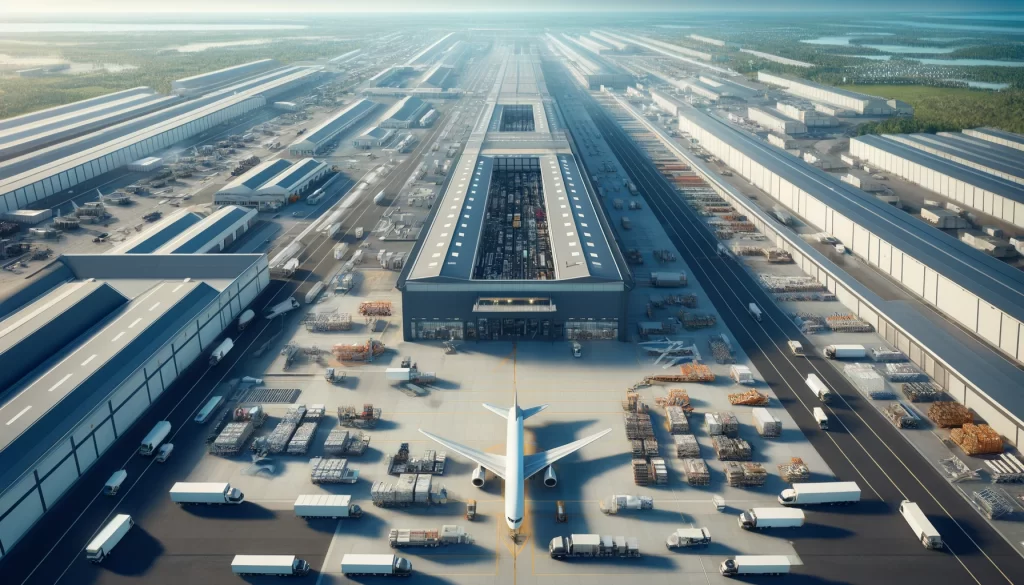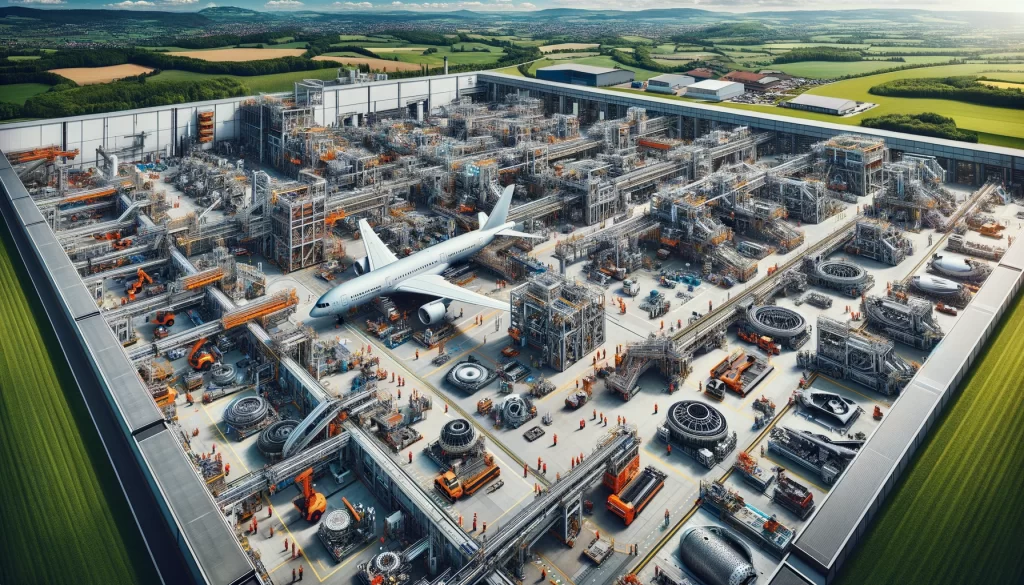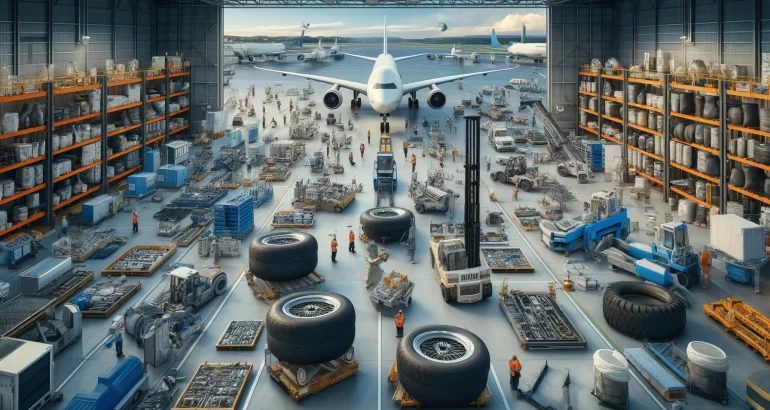Explore the dynamic and essential role of aviation component suppliers in Europe with our in-depth analysis. Learn about the market overview, strategic importance of trading, sourcing strategies, and future trends in the industry. Dive into how technological advancements and sustainability are shaping the future of aviation components supply in Europe.
Introduction
The aviation industry in Europe stands as a testament to excellence in engineering and operational efficiency, driven by a robust network of aviation component suppliers. These suppliers do not merely provide essential parts like airplane tires and main components; they ensure the safety, reliability, and performance of aircraft across the continent. This article delves into the critical role of genuine OEM (Original Equipment Manufacturer) parts and the expansive scope of aviation components that include everything from basic fasteners to complex electronics, all vital for the meticulous demands of aircraft maintenance and safety.
The Landscape of Aviation Components Supply in Europe

European Market Overview
Europe’s aviation component supply sector is a dynamic and integral part of the global aviation industry. Home to several leading aircraft manufacturers and airlines, the region boasts a well-established network of suppliers and distributors. This network not only caters to local demands but also serves as a pivotal hub in the international market. The European market is characterized by its stringent adherence to quality and safety standards, making it a model for other regions.
Key Components in Demand
In the realm of aviation components, the demand spectrum is wide and varied. While engines, fuselages, and avionics generally dominate the headlines, there is a substantial market for other critical components such as hydraulic systems, landing gears, and cabin interiors. These components, often overlooked in broader discussions, are essential for routine maintenance and emergency repairs, ensuring that aircraft meet both safety standards and operational deadlines.
FAQs
- What are the leading countries in Europe for aviation component supplies?
- Germany, France, and the UK are leading suppliers, hosting major manufacturers and a dense network of suppliers due to their advanced technological infrastructure and strong ties to global aviation networks.
- How has the European aviation components market evolved over the last decade?
- The market has seen significant growth, driven by advances in aviation technology, increased demand for air travel, and Europe’s stringent safety and quality regulations fostering innovation and adherence to high standards.
- What impact do European regulations have on the aviation components market?
- European regulations ensure high safety and quality standards, which influence the market by requiring suppliers to adhere to strict compliance measures. This regulatory environment also drives innovation in safety and sustainability practices.
Strategic Importance of Aviation Components Trading

Challenges and Opportunities
Trading aviation components in Europe presents unique challenges, including navigating diverse regulatory environments and managing supply chain disruptions, which have been particularly highlighted during global crises like the COVID-19 pandemic. However, these challenges also create opportunities for innovation and growth. For example, suppliers are increasingly adopting digital platforms and blockchain technology to streamline operations and ensure the traceability of parts.
Impact of Technological Advancements
The European aviation sector is at the forefront of adopting cutting-edge technologies that enhance the efficiency and reliability of aviation components trading. From RFID tags for inventory management to AI-driven predictive maintenance models, technology is reshaping how components are traded, tracked, and maintained. These advancements not only improve operational efficiency but also significantly reduce the environmental impact of aviation operations.
Sourcing and Distribution: Ensuring Reliability and Efficiency

Sourcing Strategies for Quality Parts
The integrity of aviation components begins with strategic sourcing practices. European suppliers emphasize relationships with certified OEMs to ensure access to parts that meet exacting standards. Moreover, a focus on sustainable sourcing practices is becoming increasingly important, as the industry moves towards a greener future. By integrating ethical sourcing and recycling programs, suppliers are able to offer high-quality parts while also addressing environmental concerns.
Distribution Networks and Logistics
Efficient logistics are crucial in the aviation parts supply chain, given the time-sensitive nature of the industry. European suppliers leverage advanced logistics networks that include air, road, and rail options to expedite the distribution process. These networks are supported by sophisticated software systems that optimize routes and manage inventories in real time, ensuring that parts reach their destinations promptly and reliably.
FAQs
- What are the key factors to consider when sourcing aviation components in Europe?
- Key factors include the certification of the parts, the reputation of the manufacturers, logistical capabilities, and the sustainability practices of the suppliers.
- How do European suppliers manage the timely distribution of aviation components?
- Suppliers utilize advanced logistics networks that integrate real-time tracking and inventory management systems, optimizing delivery schedules and routes to ensure fast and efficient distribution.
- What trends are influencing the sourcing strategies of European aviation component suppliers?
- Increasing demand for environmentally sustainable and technologically advanced components is shaping sourcing strategies, with a focus on ethical procurement and the integration of digital technologies.
The Role of Certifications and Standards in Aviation Parts Supply

Quality Assurance Processes
Quality assurance is paramount in the aviation industry. Suppliers in Europe adhere to rigorous international standards such as ISO 9001 and AS9100, which dictate quality management systems for aviation parts. These certifications are not mere formalities; they are crucial for maintaining the safety and reliability of aircraft operations, acting as a guarantee of supplier credibility and component efficacy.
Importance of OEM Parts and Certifications
Using genuine OEM parts is essential for maintaining the integrity of aircraft systems. OEM parts are designed and tested according to specific aircraft requirements, ensuring perfect fit and function. Certifications from bodies like EASA (European Aviation Safety Agency) provide further assurance that these components meet all necessary safety and performance standards.
Future Trends in Aviation Components Supply in Europe

Innovations Shaping the Market
The future of aviation component supply in Europe is being shaped by several innovative trends. One of the most significant is the shift towards sustainability, with increased emphasis on reducing the carbon footprint of aviation operations. Another trend is the digitalization of the supply chain, which includes the use of Internet of Things (IoT) technology to monitor part conditions and optimize inventory management.
Predictions for the European Market
The demand for aviation components in Europe is expected to grow steadily, driven by the recovery of the aviation sector post-pandemic and the ongoing need for efficient, safe, and sustainable aviation operations. Suppliers who are agile, technologically adept, and committed to sustainability are likely to lead this growth, shaping the future of aviation in Europe and beyond.
FAQs
- What are the anticipated technological advancements in aviation component supply chains?
- Anticipated advancements include the increased use of AI for predictive maintenance, enhanced IoT frameworks for real-time tracking, and blockchain for secure and transparent part verification.
- How is sustainability being integrated into aviation component supply?
- Sustainability is being promoted through the recycling of parts, use of greener materials and technologies in manufacturing, and by optimizing logistics to reduce carbon emissions.
- What are the predictions for the role of digitalization in the aviation components market?
- Digitalization is expected to revolutionize the market by improving supply chain transparency, enhancing inventory management, and fostering seamless communication across global networks.
Conclusion
The role of aviation component suppliers in Europe is both critical and expansive, encompassing a wide range of parts essential for the safe and efficient operation of aircraft. By broadening the scope of aviation components beyond just main parts, these suppliers ensure that they can meet the diverse needs of the
industry. As the sector continues to evolve, the strategic importance of reliable, efficient, and innovative supply chains cannot be overstated. For stakeholders in the aviation industry, the path forward involves embracing technological advances, adhering to stringent quality standards, and fostering sustainability to maintain Europe’s leadership in the global aviation market.
